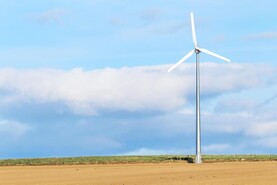The last Irish government budget before the next general election – and the first from newly-appointed Minister for Finance Jack Chambers – seems set to be a generous one for taxpayers.
Of the €8.3bn in additional funding available in October, €6.9bn will be used for increased spending in the economy while there are €1.4bn of tax cuts pencilled in.
Those numbers are contained in the summer economic statement from the Department of Finance. That document gives little detail of where the extra spending or tax cuts will fall. The statement did reveal that the Government has provided for an extra €1.5bn of spending on the health service this year. Budget allocations for that department have risen from €11.4bn in 2015 to €23bn in 2024, and now accounts for more than one in four euros of Government spending.
The priorities for Budget 2025 were said to be meeting the continued need to improve public services and infrastructure which will support Ireland’s growing population and contribute to economic expansion. The statement projects that there will be almost 2.8m people in employment in Ireland next year, up from a pre-pandemic level of 2.3m.
Population growth
The country’s population is expanding at a much faster rate than previously forecast, with Ireland’s population expected to be at 5.45m next year, more than 200,000 higher than was projected as recently as 2021.
The tax take has also improved (see Figure 1) and while the majority of corporation tax is paid in November, the performance so far this year points to a strong end to the year. It is worth noting, as the summer statement does, Ireland relies on only seven companies for a very significant share of annual corporate tax receipts.In 2022 corporate tax receipts exceeded VAT receipts for the first time. The largest source of Government tax revenue continues to be income tax which was at €33bn last year, and is running 7.5% higher than that so far this year.
The statement says that the economy as a whole faces challenges from the “4Ds” of demographic change, decarbonisation, digitalisation and deglobalisation. On decarbonisation and the transition to carbon-neutrality, it recognises that while there is the potential for some labour-market displacement (ie, job losses), Ireland’s “geographic location and climate offers significant opportunities in this regard - namely through the use of wind energy”.
There is not a single mention of supports for farming or agriculture in the 44-page document. This would imply that farm organisations will need to get their lobbying boots on in a hurry if they are to secure the supports the industry requires as it faces a huge variety of challenges.






 This is a subscriber-only article
This is a subscriber-only article










SHARING OPTIONS: